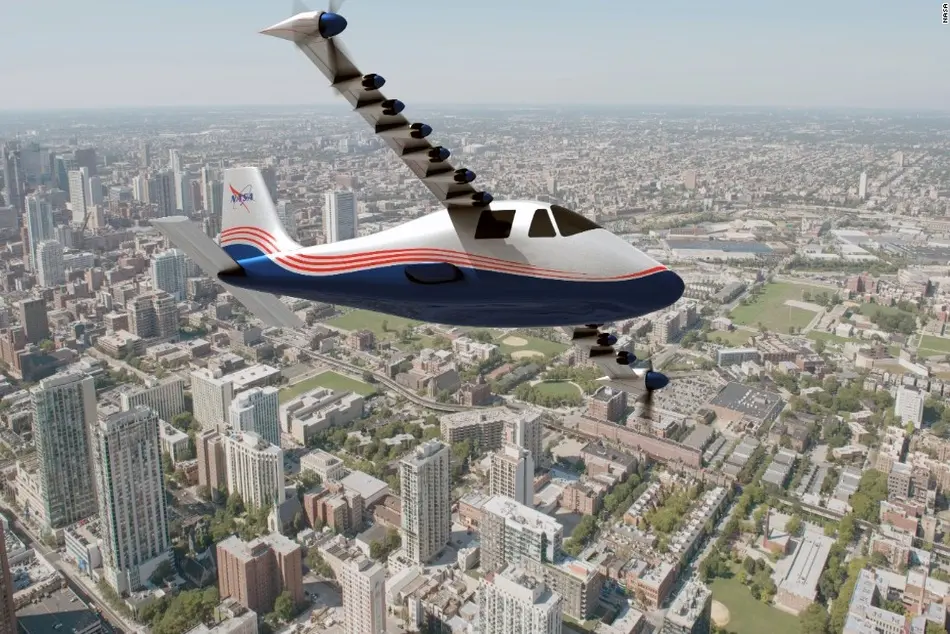NASA Awards Contracts To Develop Sustainable Concepts For 2050 Airliners
Hybrid-electric distributed propulsion, new energy sources and aircraft configurations are among topics to be studied under a program launched by NASA to define concepts and technologies for commercial aircraft that could enter service by 2050.

Hybrid-electric distributed propulsion, new energy sources and aircraft configurations are among topics to be studied under a program launched by NASA to define concepts and technologies for commercial aircraft that could enter service by 2050.
The contracts awarded to four companies and a university will help NASA identify research to be pursued following completion of the ongoing Sustainable Flight National Partnership (SFNP) project and its flagship Boeing X-66 flight demonstrator.
Under the Advanced Aircraft Concepts for Environmental Sustainability (AACES) 2050 project, Phase 1 contracts totaling $11.5 million have been awarded to Boeing company Aurora Flight Sciences, startups Electra.aero and JetZero, engine maker Pratt & Whitney and Georgia Institute of Technology.
Over the 18-month first phase, the teams will perform concept exploration trade studies to prioritize enabling technologies for full life-cycle sustainable aviation. Metrics include energy consumed, emissions, contrails and noise as well as operational and investment costs. They will also develop future scenarios taking into account market factors, energy availability, infrastructure and the environment to provide the context and establish the case for the concepts.
“Through initiatives like AACES, NASA is positioned to harness a broad set of perspectives about how to further increase aircraft efficiency, reduce aviation’s environmental impact and enhance U.S. technological competitiveness in the 2040s, 2050s and beyond,” says Bob Pearce, associate administrator for NASA Aeronautics Research Mission Directorate.
AACES restarts a journey NASA last embarked on in 2008, when it launched the N+3 project to identify concepts and technologies for airliners that could enter service in 2035. This led to the SFNP and the transonic truss-braced wing (TTBW) X-66.
“The AACES 2050 solicitation drew significant interest from the aviation community and as a result the award process was highly competitive,” says Nateri Madavan, director for NASA’s Advanced Air Vehicles Program (AAVP).
Boeing and Aurora were involved separately with N+3. Now together and armed with $3.3 million under AACES Phase 1, Aurora’s team will perform a comprehensive “open-aperture” exploration of technologies and concepts for 2050.
“We’re following a similar formula [to N+3] by getting involved with university experts in casting a wide net and identifying a road map of technologies that we’d like to mature to achieve the climate objectives in the AACES solicitations,” says Graham Drozeski, Aurora chief technology officer.
“We benefit now from being tightly integrated with the Boeing company,” he says. The team includes Boeing’s Commercial Airplanes, Research & Technology and Sustainability and Future Mobility arms as well as the Massachusetts Institute of Technology (MIT), Penn State University and the University of Michigan.
Electra, with more than $3.4 million, will explore extending the distributed hybrid-electric propulsion architecture under development for its nine-seat, short-takeoff-and-landing EL-9 to develop innovative wing and fuselage integrations.
Electra’s team includes American Airlines, Honeywell Aerospace Technologies, Lockheed Martin Skunk Works, the MIT Laboratory for Aviation and the Environment, and UMichigan Department of Aerospace Engineering. The team will be led by Electra’s Alejandra Uranga, who previously co-led a NASA N+3 program while at MIT.
“N+3 is, I think, one of the most impactful programs NASA aeronautics has done in our lifetimes,” says John Langford, founder and chairman of Electra and founder and former CEO of Aurora. “And the next big thing is AACES, because it really is shaping what commercial aviation is going to look like in 2050.”
With just more than $2 million, blended wing body (BWB) developer JetZero will explore technologies to enable the use of cryogenic liquid hydrogen as a fuel. The award, which represents one of the first by NASA directly concerning the potential use of hydrogen for commercial aviation, covers studies of both conventional tube-and wing and BWB configurations.
The company is “honored NASA has selected our team to conduct the important work of bringing together the potential for a liquid-hydrogen-powered, long-range BWB,” says Romar Frazier, head of propulsion for JetZero.
Pratt says it will “evaluate various propulsion technologies and fuels to focus development efforts on opportunities with the highest cumulative beneficial impact on environmental, health and cost factors,” with $1.2 million in funding under AACES Phase 1.
“Items that we are considering include hybrid electric, heat recovery, airframe and propulsor integration, alternative fuels such as hydrogen, and various efficiency improvements enabled by alternative fuels,” the company says. It added that the HySIITE (Hydrogen Steam and Inter-Cooled Turbine Engine) project funded by the Advanced Research Projects Agency - Energy will inform the hydrogen-enabled concepts
With almost $1.37 million, Georgia Tech will explore sustainability technologies including alternative fuels, propulsion systems and aircraft configurations and develop concepts incorporating the selected technologies, with its Advanced Technology Hydrogen Electric Novel Aircraft as a starting point.
AACES forms part of NASA’s broader Advanced Air Transport Technology project, which itself grew out of the Subsonic Fixed Wing (SFW) project that ran to 2020. SFW outlined a series of fuel burn, emissions and noise targets, the most aggressive of which were aimed at a new generation of aircraft concepts for potential entry into service in the mid-2030s. Dubbed N+3 to indicate an aircraft three generations beyond the state of the art in the 2000s, the study paved the way for SFNP, which was launched in 2021.
Focused on maturing and integrating technologies that could be incorporated into aircraft for the 2030s, the SFNP built on airframe and propulsion work performed under SFW. This included initial research contracts awarded in 2008, including to Boeing for its Subsonic Ultra Green Aircraft Research (SUGAR) project.
Under SUGAR, Boeing and NASA evolved the TTBW, which forms the basis for the X-66 sustainable flight demonstrator planned to fly in 2028-29. Other ongoing SFNP projects include the development of more efficient hybrid engine cores and processes for the rapid manufacturing of lightweight composite materials, as well as the Electrified Powertrain Flight Demonstration project.
Under this round of AACES studies, the agency aims to go beyond SFNP by identifying and selecting promising aircraft concepts and technologies for further investigation. Based on these, NASA hopes to continue its sustainable aviation strategy by creating a credible set of missions, architectures and technologies for subsonic transports that could enter service in the 2050s.



